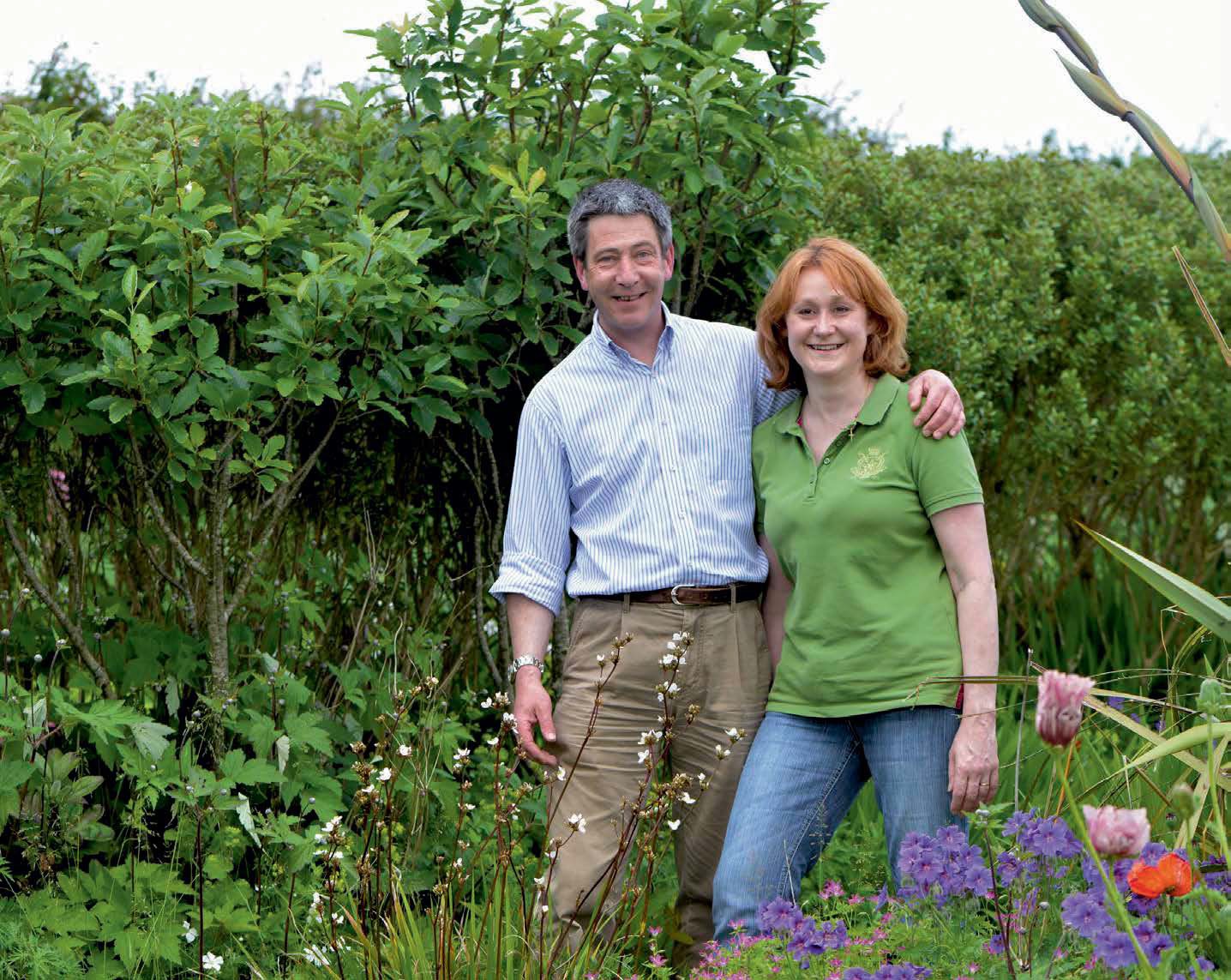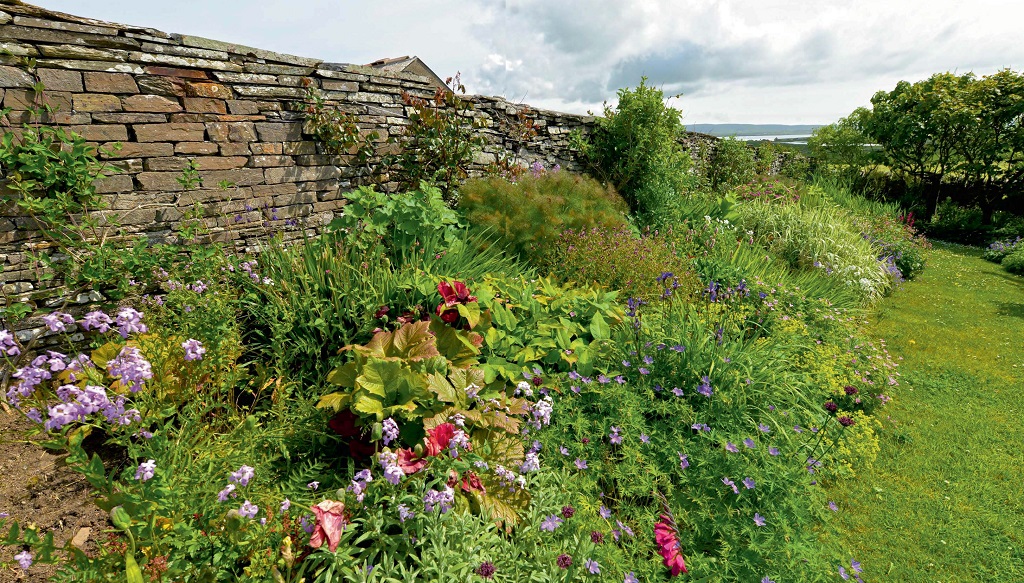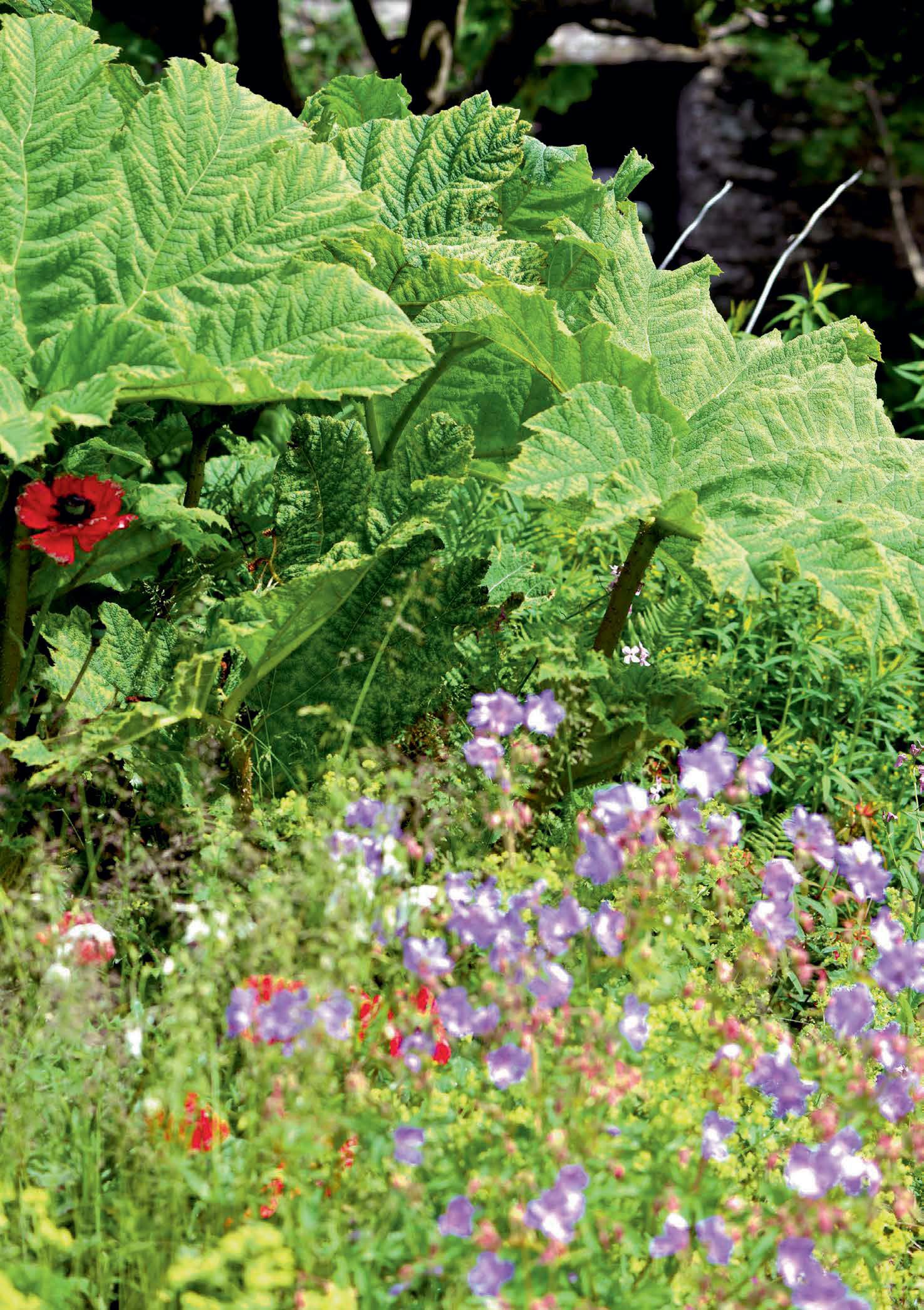Gardening on Orkney may be an uphill struggle, but Euan and Fiona Smith’s 150-year-old walled garden shows it is worth the effort.
However, it presents challenges that would daunt even the most enthusiastic of gardeners.
Beautiful as the islands are, the constant battle with the wind and rain, plus the lack of shelter, makes it difficult to establish gardens. But at Kierfiold House, 17 miles west of Kirkwall, Euan and Fiona Smith have defied the elements to revitalise a 150-year-old walled garden, creating a vibrant scheme with a contemporary twist.
The couple, who moved to Orkney from West Lothian, were immediately smitten by the setting. A former Victorian dower house for nearby Skaill House, Kierfiold sits in a raised position with open views over the Loch of Harry a short distance from Orkney’s Neolithic World Heritage Site, Skara Brae.
In this remote, unspoilt landscape, the white harled house stands out clear against a background of green fields. At first glance it seems an unlikely place for a garden. And it is not until you walk up the drive, punctuated with the sycamore trees underplanted with pink and blue geranium, that you get a your first hint of the flair the couple bring to this garden.
A wooden gate below the house opens into the sloping site, where the view over a richly textured tapestry of plants stands in surprising contrast with the surrounding landscape. In front of you, a central border generously packed with plants is framed by grass paths and threaded with flagstone paths.

Euan and Fiona Smith moved to Orkney from West Lothian (Photo: Angus Blackburn)
Generous perimeter borders are planted with structure in mind: with red Fuchsia, pink Escallonia and white-flowering Olearia. The maroon foliage of Rodgersia provides a foil for Alchemilla mollis, orange Euphorbia griffithii Fireglow, pink Persicaria and yellow, selfseeded Welsh poppies.
In early summer, the scheme is brightened and linked with scatterings of scarlet Oriental poppies. The multitude of plants softens the stone work of a recently introduced west-facing terrace and a central sitting area, which add a contemporary note while taking advantage of the sun and the view.
Euan, who moved here with Fiona 11 years ago, explains that the house and garden were built by William Watt, the laird who discovered the nearby stone-age village of Skara Brae: ‘Watt originally sited the house on the crest of the hill about 1,000ft from its current location where it would have had wonderful views over the Bay of Skaill and the Atlantic Ocean. However, once the builders reached window height he decided it was too exposed and the house was moved stone by stone down the hill.’
The protective nine-foot high garden wall was built at the same time as the house in 1852: over the decades it has provided invaluable shelter for birds and insects. One of the first things you notice on entering the garden is the bird song.
Euan and Fiona, whose previous garden in Edinburgh was ‘about the size of our compost heap here’, admit that the size of the garden caused them to hesitate before buying the house. ‘But friends assured us that taking on a large established garden was much easier than starting one from scratch.’

The informal borders are packed with colour, with mown grass paths separating them. (Photo: Angus Blackburn)
Their first job involved attacking tiny, yellow-flowered celandine, which was making a takeover bid in the lower beds. An ongoing battle with ground elder followed.
‘We remember being out in a biting wind and sleet thinking, “What on earth have we done?”’ Wind and salt spray are year-round problems.
‘The wind can be devastating at any time,’ Fiona continues, recalling the May day when a mass of orange, purple, pink and deep red poppies were transformed overnight into sad-looking seed heads with the paths scattered with giant confetti. The short winter days are less demanding than the long summer ones, which cause an intense growing season.
‘This means that cutting the lawns and paths is a bit like painting the Forth Rail Bridge – the grass grows almost as fast as we can mow it. We spend about 16 hours a week mowing lawns between April and the end of September.’
Learning about plants best suited to the Orkney climate was a priority, as a walk through the borders reveals. Favourites, such as the lavender, rhododendrons and camellias that flourished in the couple’s West Lothian garden, are raised in containers here, and over-wintered in the greenhouse.

Gunnera and purple geranium are highlighted by scarlet poppies. (Photo: Angus Blackburn)
But astilbe, Hostas, Persicaria, primula and many alpines thrive in the central bed, as do native New Zealand species such as Celmisia, flax and white-flowering Libertia.
The gunnera plants in the lower border are spectacularly dramatic, and drifts of hardy geraniums are everywhere. The previous owners planted more than 50 different varieties in a range of blue, pink and white, and Fiona has continued this interest, planting a further 60 or so varieties including many early and later-flowering ones.
‘Because we are so near the coast, the temperature in the garden rarely falls below 4° centigrade,’ Euan says, ‘so we are able to grow tender species such as osteospermum and salvias.’
Fiona points out that they have had to resign themselves to the effects of the wind. ‘There’s no point getting upset about a force nine gale when there is simply nothing you can do about it,’ she says. ‘But it is important to sit and enjoy the weather when it is good.’
The Garden Cottage at Kierfiold is available to rent.
(This feature was originally published in 2016)
TAGS

